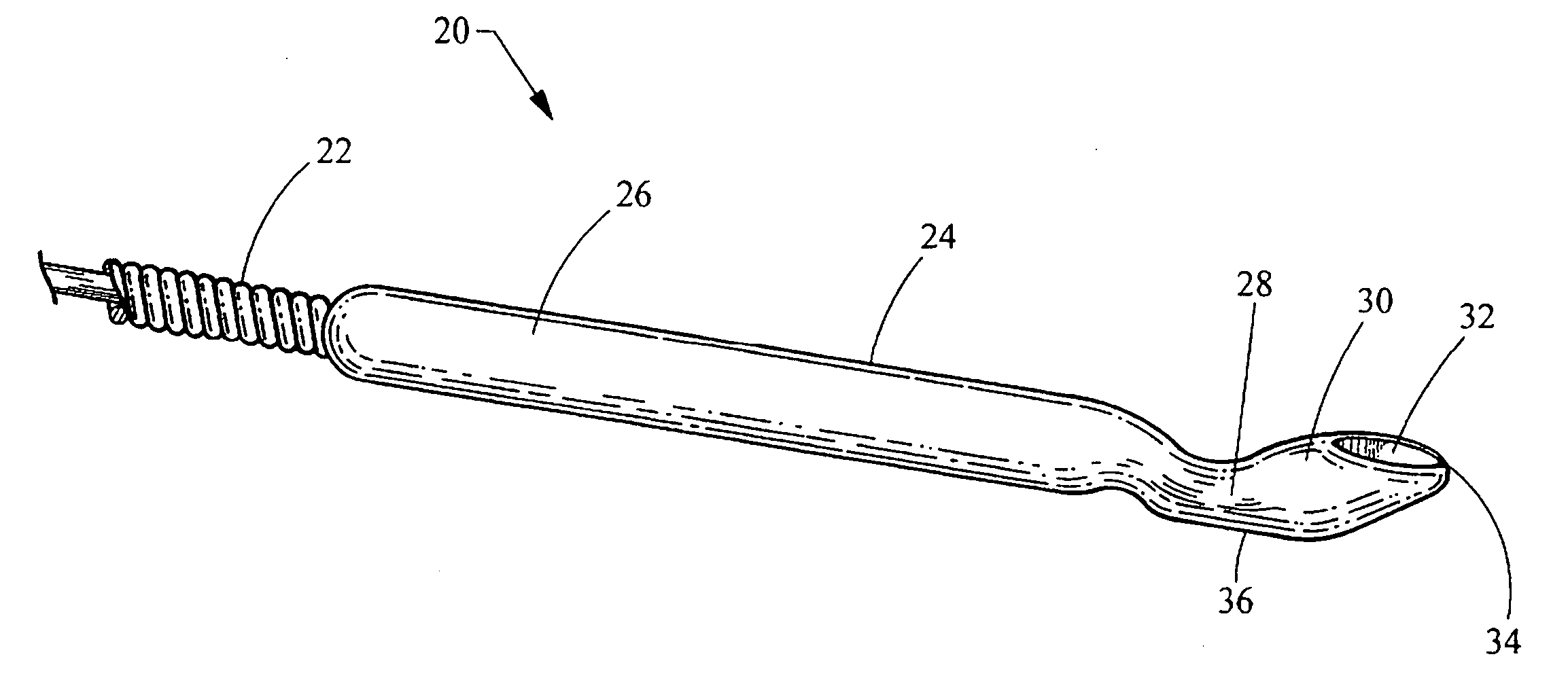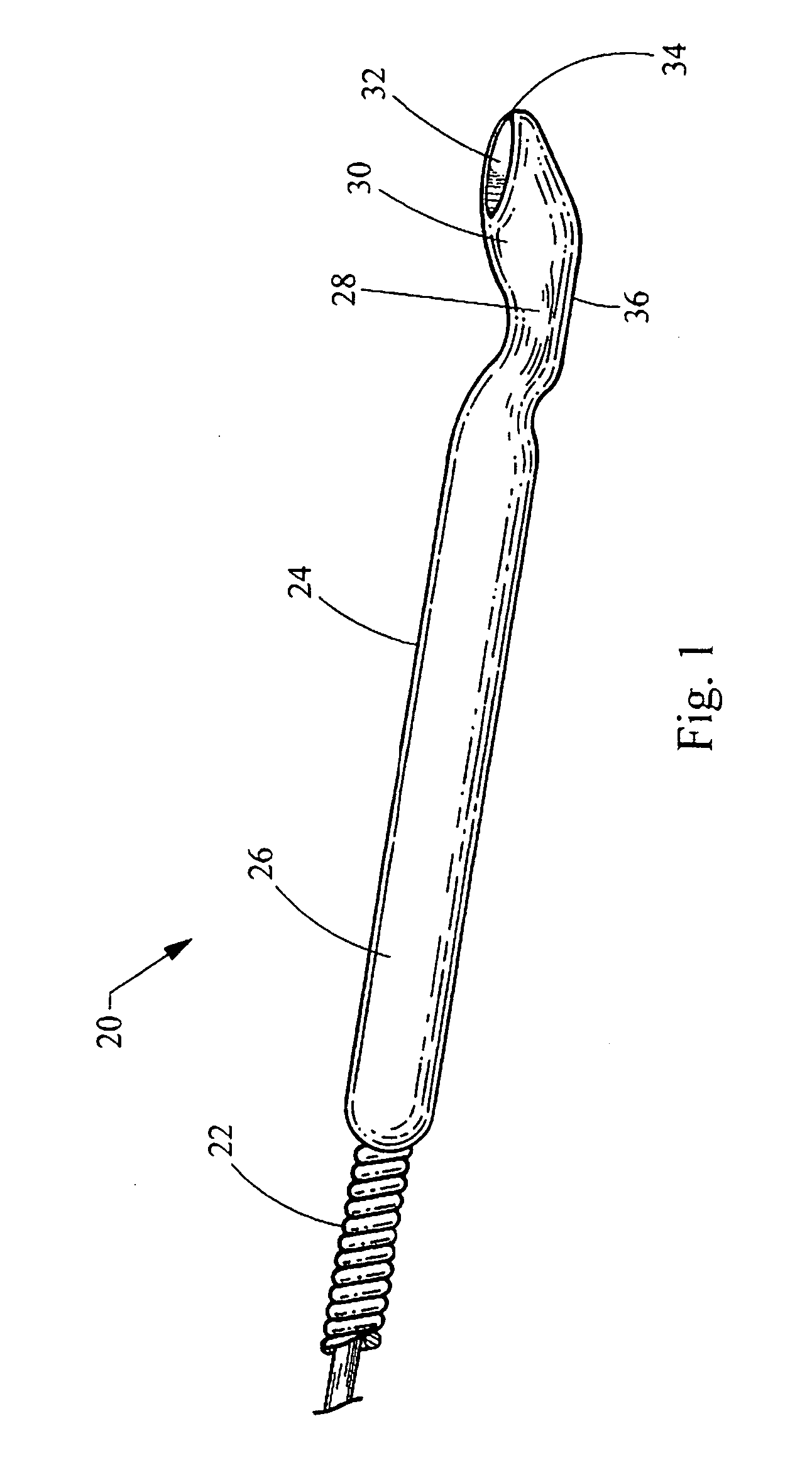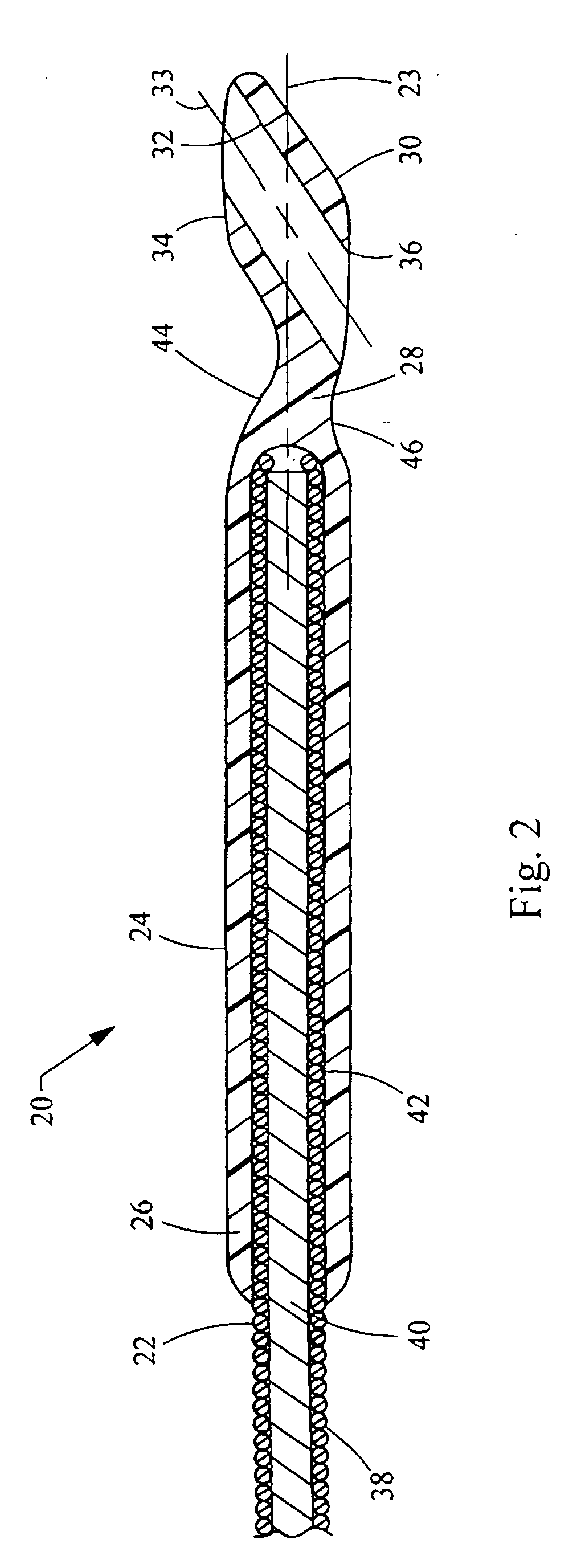Wire guide having distal coupling tip
a wire guide and distal coupling technology, applied in the field of wire guides, can solve the problems of proximal tortuosity of the vasculature wire guide tip may prolapse away from the site, etc., to achieve the effect of easily and reliably traversing through the body lumen
- Summary
- Abstract
- Description
- Claims
- Application Information
AI Technical Summary
Benefits of technology
Problems solved by technology
Method used
Image
Examples
Embodiment Construction
[0019] Turning now to the figures, FIGS. 1 to 3 depict a coupling wire guide 20 constructed in accordance with the teachings of the present invention. The coupling wire guide 20 is easily and reliably coupled to and traversed along a previously introduced wire guide 10, and also is easily used alone by maintaining a relatively low profile when decoupled. While wire guides are generally used in percutaneous interventional procedures, it will be recognized by those skilled in the art that the wire guide of the present invention may also be employed non-percutaneously, such as in endoscopic or other intracorporeal procedures. As best seen in FIG. 1, the coupling wire guide 20 generally includes a main body 22 and a tip portion 24. The tip portion includes an attachment section 26, a neck 28 and a coupling head 30. The coupling head 30 defines a coupling passageway 32 having a distal port 34 and a proximal port 36 through which the previously introduced wire guide 10 passes, as shown in...
PUM
 Login to View More
Login to View More Abstract
Description
Claims
Application Information
 Login to View More
Login to View More - R&D
- Intellectual Property
- Life Sciences
- Materials
- Tech Scout
- Unparalleled Data Quality
- Higher Quality Content
- 60% Fewer Hallucinations
Browse by: Latest US Patents, China's latest patents, Technical Efficacy Thesaurus, Application Domain, Technology Topic, Popular Technical Reports.
© 2025 PatSnap. All rights reserved.Legal|Privacy policy|Modern Slavery Act Transparency Statement|Sitemap|About US| Contact US: help@patsnap.com



